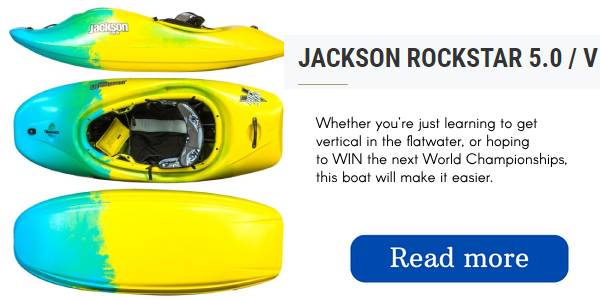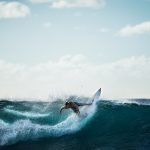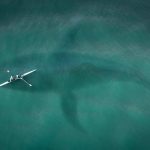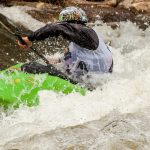Kayak Evolution: United States
Kayaking in white water has become a thrilling experience, with daredevils tackling rivers such as the Colorado in the US and the Salzachofen Gorge in Austria – some of the most demanding rivers on the planet.
In the 1950s, fiberglass kayaks rose in popularity and reigned supreme for more than three decades until polyethylene became the more popular choice. Polyethylene proved to be cheaper and easier to manufacture.
The purchasing of kayaks increased, causing kayaking to transition from a sport to an inexpensive leisure activity.
Sea Kayaking in the United States began to gain in popularity during the mid to late 1970s. The sport spurred on a lot of producers to make narrow kayaks, flatten them out, and add an distinctive tool referred to as the controllable rudder.
Kayaks maneuvered by rudder could trace a course, direct the vessel, and adjust for gusts and streams. No matter where they are manufactured, these kayaks are considered to be modeled after North American designs.
Raw Materials
Many people who are conscious of their impact on the environment find the concept of crafting a kayak hull out of recycled plastics to be very attractive. The primary ingredient of a plastic kayak is polyethylene. Polyethylene has a waxy texture and is highly durable, as it is not affected by moisture or most chemicals.
It can be made softer by repeatedly warming it up and harder by cooling it down. The features of the material make it ideal for creating kayaks. Sufficient amounts of refurbished polyethylene from plastic beverage containers are present, possessing enough strength and resilience for the construction of kayaks.
Kayaks have seats manufactured from polyethylene. Floating aids, dividers, and cushioned padding for the kayaker’s hips, knees, and heels are typically constructed out of a closed-cell foam such as Ethafoam.
The rudder pedals or foot braces tend to be constructed out of an especially lightweight and corrosion-resistant metal, such as aluminum, and the rudder is normally made of the same material. The grab loop could consist of a piece of nylon rope attached to either a plastic or wooden handle, toggle, or grip.
The Manufacturing Process
A polyethylene kayak’s shape is a lengthy, empty chamber with an even thickness generated through a method called rotational molding. The construction of the shell is done first, followed by the manual assembly of the seat and other components.
The outer covering could either be fashioned as one continuous form or created from two distinct components that are combined later on. Rotational molding necessitates curves that are fairly smooth, therefore one-piece shells are unable to have sharp intersections between their surfaces.
For a meeting point that needs to be more exact, such as where the hull meets the deck, a two-piece shell construction is used. This text explains how to create a two-piece shell.
Loading the mold
Molding the hull or deck
- 2 The mold is held by a mechanical arm which can rotate the mold in two directions at the same time. The arm can also move, or index, the mold from one process station to another. After the mold is loaded, it is moved to the heating station where an oven heats it to 480-840°F (250-450°C).
As the heat from the mold melts the plastic, the mold is slowly rotated in two directions. Gravitational force causes the melted plastic to flow to the front and rear and up the sides of the rotating mold, eventually covering the entire surface with a uniformly thick skin of plastic.
Continued heating then fuses the plastic into a solid layer that attaches itself to the mold.
- 3 Next the mold is indexed to the cooling chamber. By continuing to rotate the mold and gradually cooling it with carefully directed sprays of air and then water, the kayak hull or deck further hardens and shrinks away from the mold.
Repeated cycles of heating and cooling may be required to form the kayak properly. After the final cooling, the hull or deck is removed from the mold.
Assembling the shell
Final assembly
- 5 Closed-cell foam flotation aids are inserted into each end of the kayak and held in place with adhesive. Some kayaks use inflatable flotation bags instead. These flotation aids keep the kayak level and floating on the surface should the craft capsize. If the kayak design uses bulkheads, then those pieces are bonded in place and sealed with a polyurethane sealant.
The seat is either suspended from straps attached to the sides or supported by a piece of foam bonded to the inside of the bottom of the hull. Adjustable foot braces or rudder pedals are attached to the inside of the shell, forward of the cockpit, using non-corrosive metal fasteners.
The hatch covers have waterproof gaskets installed before they are put in place and the grab loops are installed. Finally, a drain plug is inserted in a molded hole in the shell.
Shipping
Quality Control
The majority of the assessments for ensuring a rotomolded kayak is of excellent quality take place during the molding phase. It is essential that the speed of rotation and temperature of the oven are kept at the right levels in order to make shells with consistent thickness.
Warning should be taken while cooling to prevent deforming the outer part. It is necessary to be very exact in monitoring the length of time for both warming and cooling processes, as well as the amount of time in between the two.
The Future
The popularity of kayaking as a form of amusement as well as an organized event is increasing. Better success in competitive kayaking depends on the utilization of modern techniques for constructing and designing new items, which may include the use of new materials.
Many passionate kayakers will insist that the materials used to make their boats be eco-friendly, like recycled plastics.
Final Words
All participants in kayaking nowadays should be grateful to the Inuit tribe from Greenland who invented the boat type known as a kayak. This process that began as a gradual process ended up leading to the development of an extensive compendium and repository of information about the sport of paddling, which is still utilized by enthusiasts today.
The Inuit and Aleut people showed fabulous engineering brilliance from the start with kayaking, which still evidences their inventive abilities in the making of today’s kayaks.




